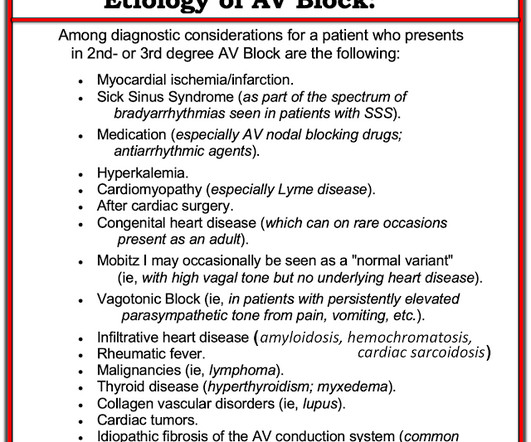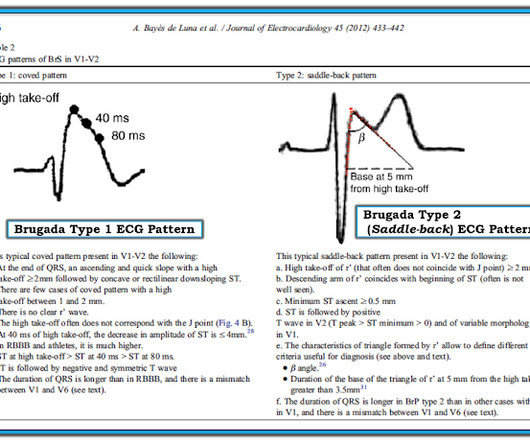A 40-Something male with a "Seizure," Hypotension, and Bradycardia
Dr. Smith's ECG Blog
OCTOBER 7, 2019
Both of these features make inferior + RV MI by far the most likely ( Pseudoanteroseptal MI is another name for this ) There is also sinus bradycardia and t he patient is in shock with hypotension. A narrow complex bradycardia without any P-waves is also likely to respond to atropine, as it may be a junctional rhythm.










Let's personalize your content